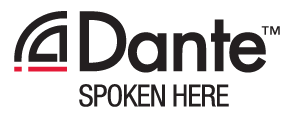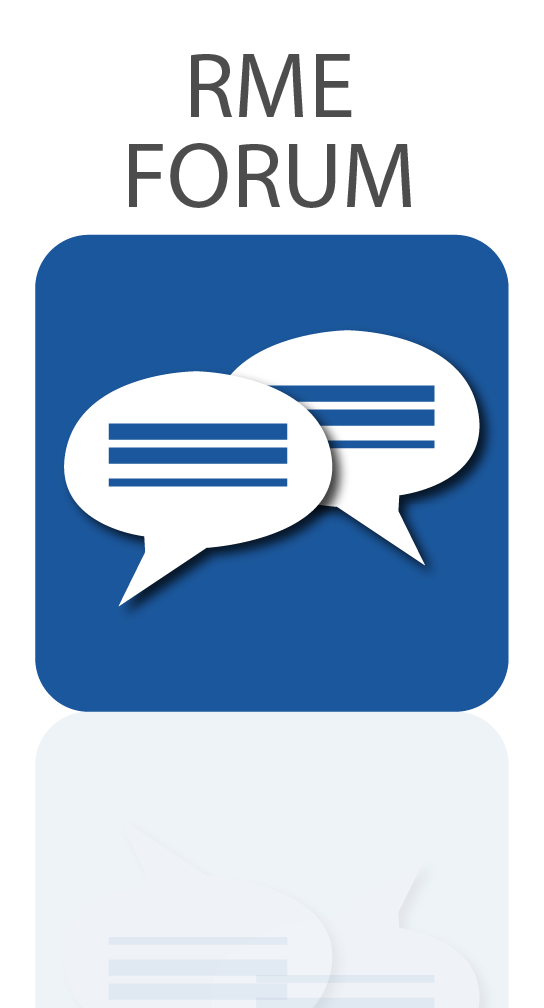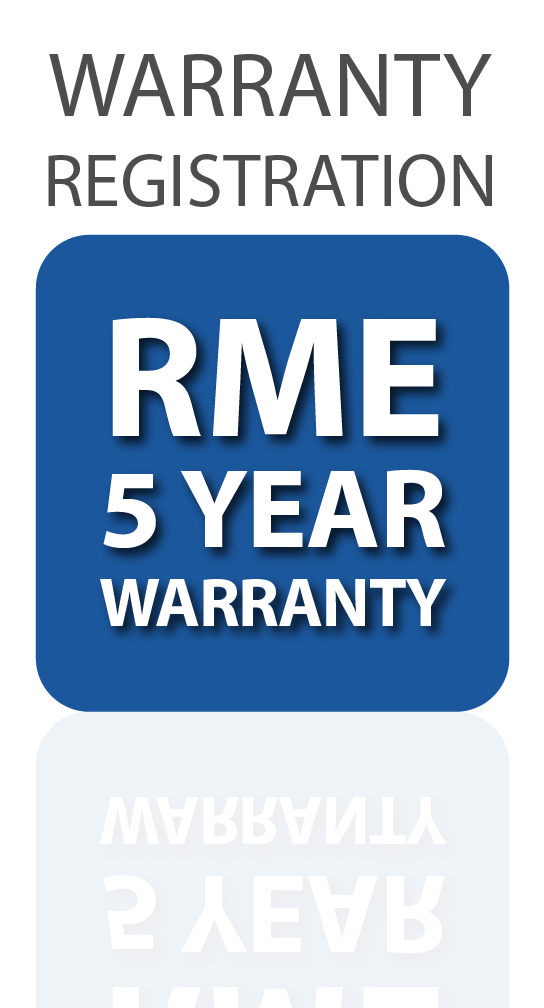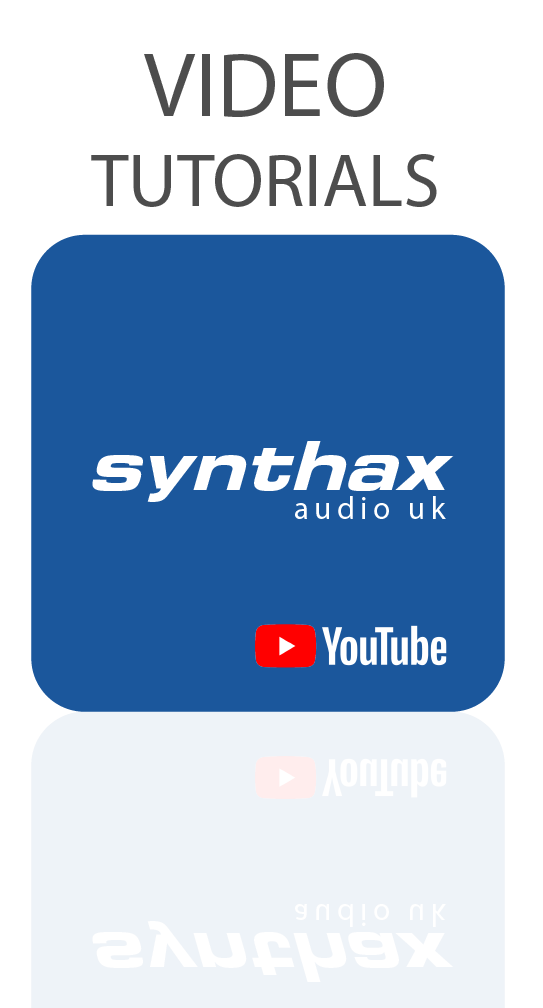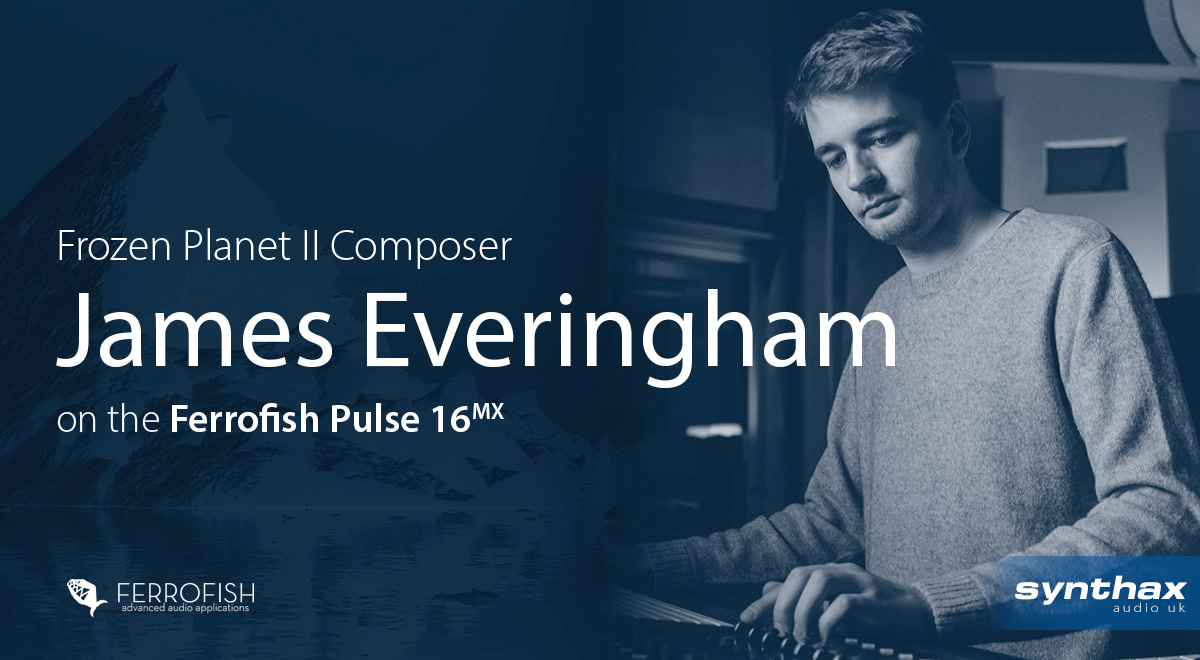James Everingham is a British-born composer and recording engineer whose musical talents have graced the soundtracks of films, TV shows, commercial recordings and computer games alike.
Currently based out of Los Angeles, his output includes such diverse projects as the BBC’s Frozen Planet II (with Hans Zimmer and Adam Lukas), several National Geographic documentaries, NBC’s Superbowl LVI show opener, and the popular computer game series Minecraft: Education Edition.
He’s also contributed to the songs of recording artists like RuthAnne, Youngr and AURORA, as well as lending his orchestral composition skills to the genre-pushing productions of drum and bass producer Keeno.
We caught up with James to find out more about working with Hans Zimmer; how his approach differs when composing for production music and recording sample libraries; and why the Ferrofish Pulse 16 MX was the perfect expansion for his RME-based recording studio in LA.
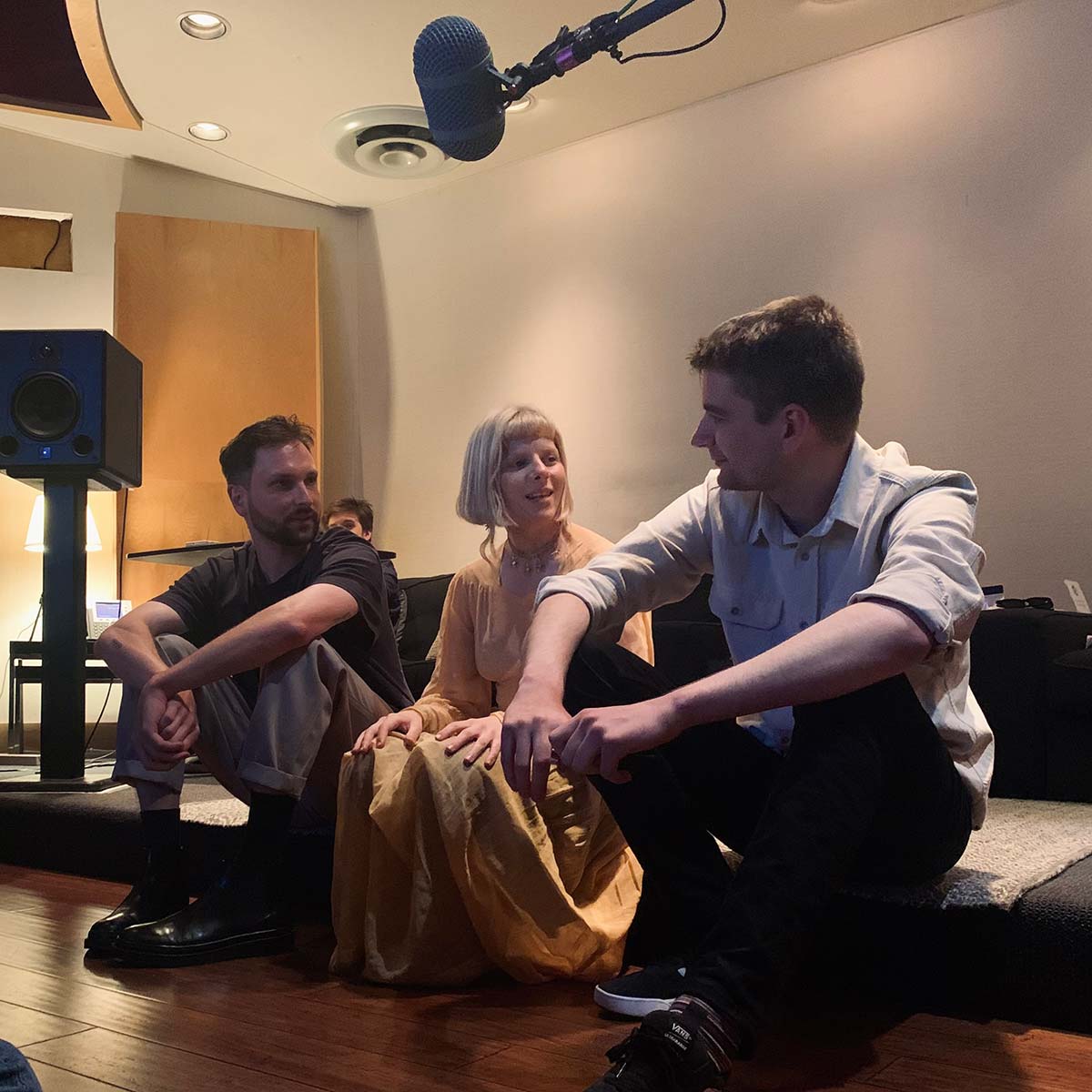 “Avoiding surface sentimentality”
“Avoiding surface sentimentality”
An avid film enthusiast from a young age, James says he initially had aspirations of becoming a Director or Director of Photography. It was through making his own short films however that he developed a love of scoring-to-picture, which he describes as the “perfect combination of my passions for film, music and technology”.
His talents for orchestral composition recently led to a collaboration with Emmy-winning composer Adam Lukas and the legendary Hans Zimmer, with the trio teaming up to provide the soundtrack for the BBC’s epic nature documentary series Frozen Planet II (presented and narrated by UK national treasure Sir David Attenborough).
“I first met Hans around 8 years ago, through my production music relationship with Extreme Music,” James says.
“Since then I’ve had the great privilege of working with him on a number of projects, both as co-composer on Frozen Planet II and MrBeast’s Antarctica adventure, and as score producer for some of my TV work like Apollo: Missions to the Moon and The Real Right Stuff, through Bleeding Fingers Music (Hans’ production company).
“Something invaluable Hans taught me was how to find the subliminal stories of any project regardless of the medium, and how to avoid surface sentimentality.
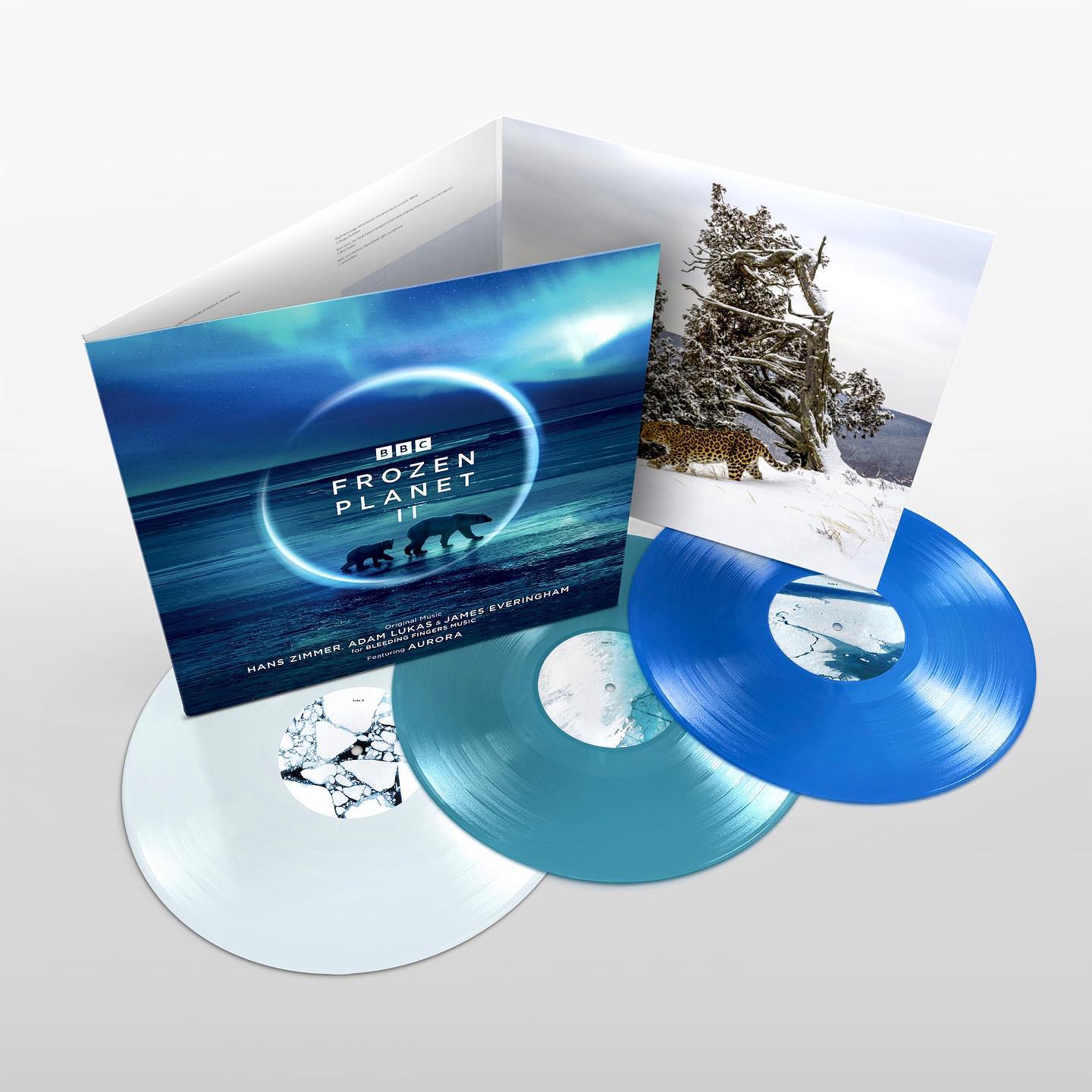 “This was big on Apollo: Missions to the Moon – ultimately it wasn’t so much about the rockets, the launches or the technical achievements, but the heart of the stories, the human element. A lot of credit for that also has to go to director Tom Jennings for his masterful storytelling through the archival footage.”
“This was big on Apollo: Missions to the Moon – ultimately it wasn’t so much about the rockets, the launches or the technical achievements, but the heart of the stories, the human element. A lot of credit for that also has to go to director Tom Jennings for his masterful storytelling through the archival footage.”
Whilst many projects demand a solo effort from a composer, Frozen Planet II‘s score was the result of teamwork between James, Adam and Hans. How did this collaboration shape the soundtrack, and how does the process differ when producing as a team?
“Well firstly there’s the logistical advantage,” James says. “Frozen Planet II required almost 6 hours of music in a relatively short time-frame, so having three composers tackle the music definitely helped keep the workload manageable.
“Fortunately as a team, Hans, Adam and I felt very much on the same wavelength, and we were quickly able to operate as a well-oiled machine. That of course helped bring cohesion to the score, and we often played to our individual strengths. But it also allowed us the freedom to challenge each other, and push the boundaries of what a natural history television score could sound like.”
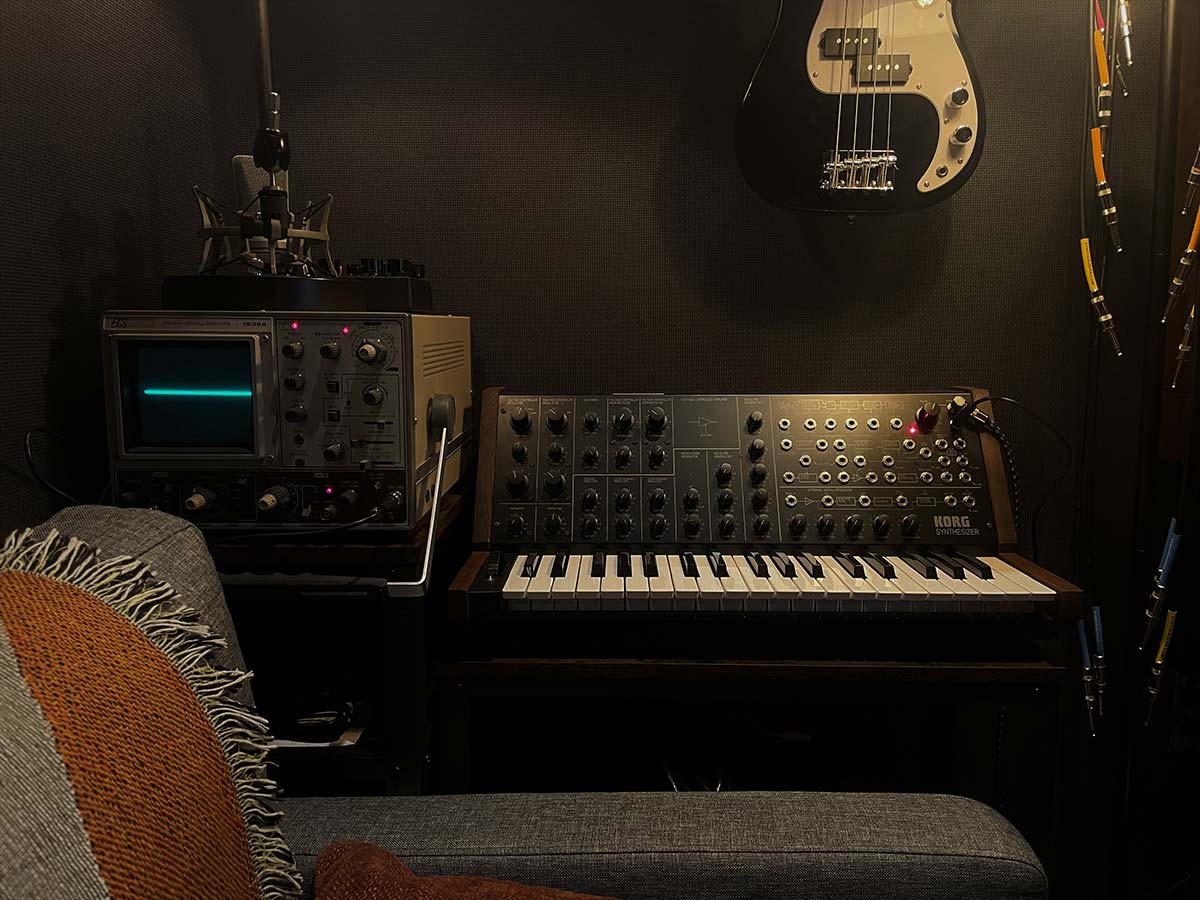 Telling stories through music
Telling stories through music
As anyone working in a creative role will no doubt attest to, facing the ‘blank canvas’ of a new project can be a daunting experience even for the most seasoned of professionals.
Given the high stakes of producing works that will reach millions worldwide, we were curious to find out where James finds inspiration for new ideas, and how he navigates the potential pitfalls of an empty project window.
“Starting a score comes with sitting around a table with the creative team, and discussing the story being told,” James says. “You need to think about the sonic worlds the music will enter into, in order to tell and enhance that story.
“Will it be symphonic or operatic in nature, or something more synthetic and ethereal? Are we going to keep things very traditional, or are we going to try and infuse a more traditional score with instrumentation and arrangement tricks from other genres?
“Only then can the first pieces of music be written, and the blueprints of the score begin to be unravelled.
“Individual cues can come from many places – often the picture will dictate very clearly what the music needs to do. Sometimes that can be as simple as a colour or timbre. Other times, I’ll deliberately work against the picture, for added dramatic effect.
“Certainly a piano sketch can be the way in, but I try to keep the process fresh and reactive to avoid repetition.”
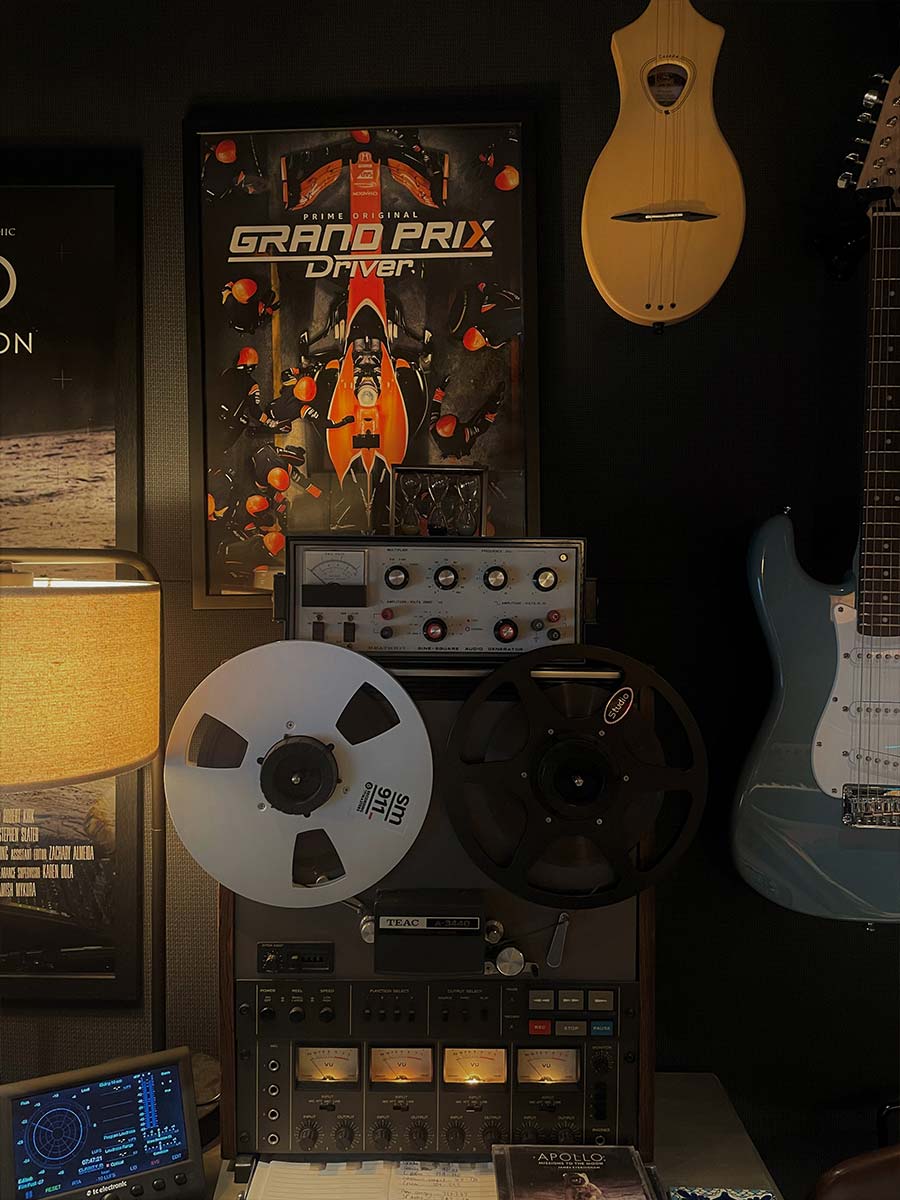 Production Music and Recording for Sample Libraries
Production Music and Recording for Sample Libraries
James’ expertise in scoring-to-picture is well-known, but he’s also gained recognition for the extraordinary sample libraries he’s masterminded (for the likes of Spitfire Audio and the Royal Albert Hall), as well as his proficiency for writing production and library music.
Reflecting on the slightly different approach required for each medium, James says he embraces the diversity working on this variety of projects brings. He believes the disciplines can complement and influence one another, with production music providing fertile grounds for new ideas which he takes back to his scores.
“There’s certainly overlap in the end product, but it can be very different in process,” James says. “Scoring to-picture can in many ways feel easier, as the picture often dictates the beats to hit, the emotions to bring out, and the story to tell.”
“picture often dictates the beats to hit, the emotions to bring out, and the story to tell”
“Production music on the other hand is more of a blank canvas. I like to view it as a safe space to exercise production skills in genres I might not be so familiar with, without the need to commit to an entire film or series in that style.
“Working on a film or series can be tunnel-vision inducing, and the variety of production music is a great way to bring refreshment to the creative process.”
James’ sample libraries have encompassed a range of styles – from capturing iconic instruments like the RAH’s colossal 9,999 pipe organ, to the innovative performances of Spitfire Audio’s Fractured Strings.
With modern recording so intertwined with technology, the question of a traditional approach – versus one of experimentation – is raised once again. Is James more of a recording purist, or does his like to push the envelope?
“Definitely a bit of both,” James says. “The Royal Albert Hall organ, while a very traditional instrument, provided all kinds of jaw-dropping sonic characteristics that had the sound designer part of my brain whirring.
“Fractured Strings, while perhaps the more unusual of the two, was actually more about capturing the performances of world-class players, and their musical interpretations of the icy phenomena of Frozen Planet II.
“Regardless of the source material, I’m always trying to subvert expectations and reinterpret what might be the expected sound, whether through manipulation and sound design, or through unusual arrangements and orchestrations of traditional instrumental line-ups.”
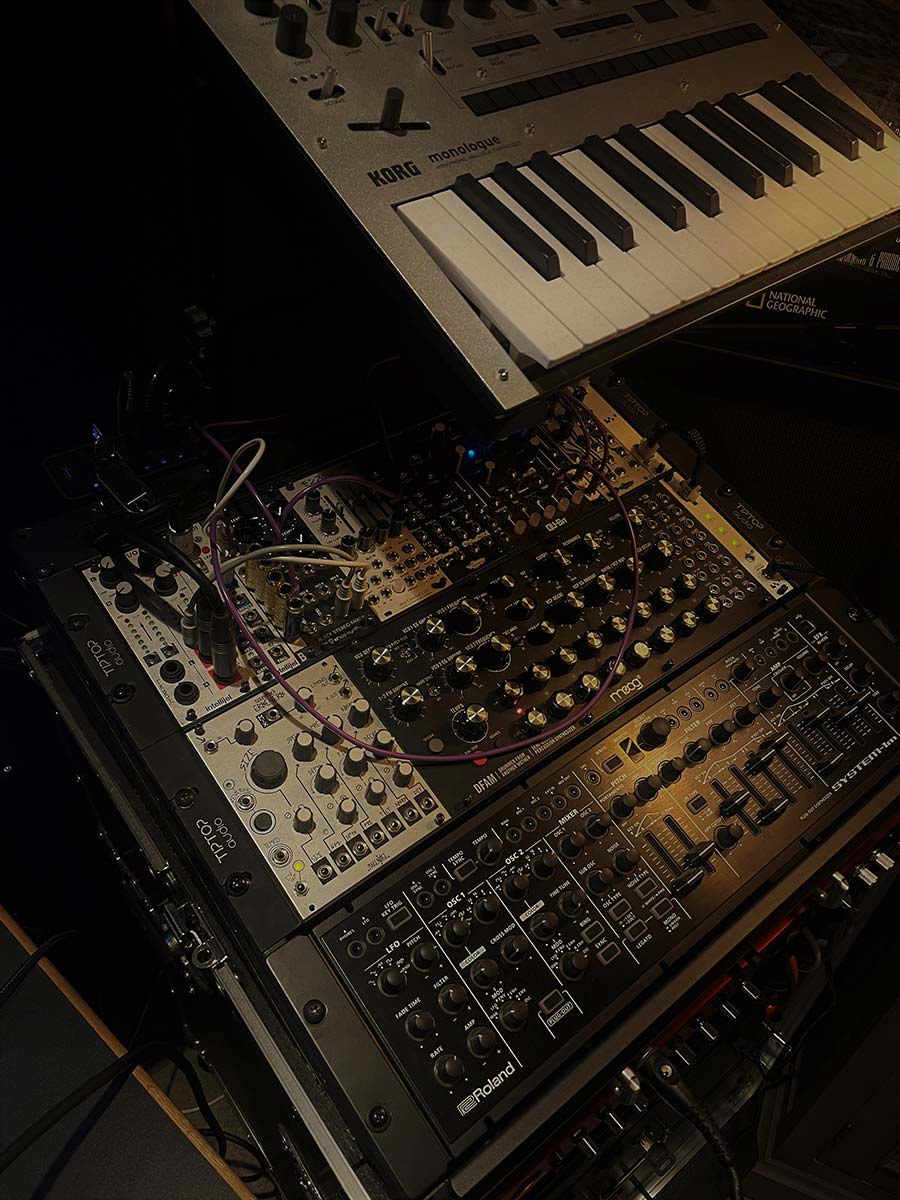 Exploring the Studio Setup of James Everingham
Exploring the Studio Setup of James Everingham
Like many modern producers, James’ studio is a hybrid of software and hardware, a combination that provides him with plenty of scope for adding new textures and depth to his compositions, and helps to keep every project unique.
“I have a variety of analogue and modular synthesizers scattered around the room,” he says on the subject of his studio rig, “as well as various tape machines, guitar pedals, acoustic instruments and outboard.”
For audio interfaces, RME’s Fireface UCX and Digiface USB keep everything running smoothly.
“I’m monitoring in quad, and will likely work up to 5.1 in the near future. For the past few years I’ve been using a combination of the RME Fireface UCX with Cubase and the RME Digiface USB with Pro Tools, and some AppSys ADX-16s to send ADAT around the room in a somewhat tidy manner. Recently I added the Ferrofish Pulse16 MX into the mix as well.”
As it turns out, it was on the recording sessions for the Royal Albert Hall sample library that James first encountered Ferrofish, in the rig of fellow engineer Chris Kalcov.
Already on the lookout for an AD/DA converter to expand his analogue I/O in the studio, James was impressed with what he saw.
“Mobile recording expert Chris Kalcov was engineering and put a rack of them on the stage – we had mics and preamps all over the Hall – and ran MADI to the backstage bar where we set up a makeshift control room.
“We only had a few high-intensity days to capture everything we needed from the organ, and load-in and setup times had to be kept incredibly tight. I had heard of Ferrofish before, but it was great to see them in action working so well.”
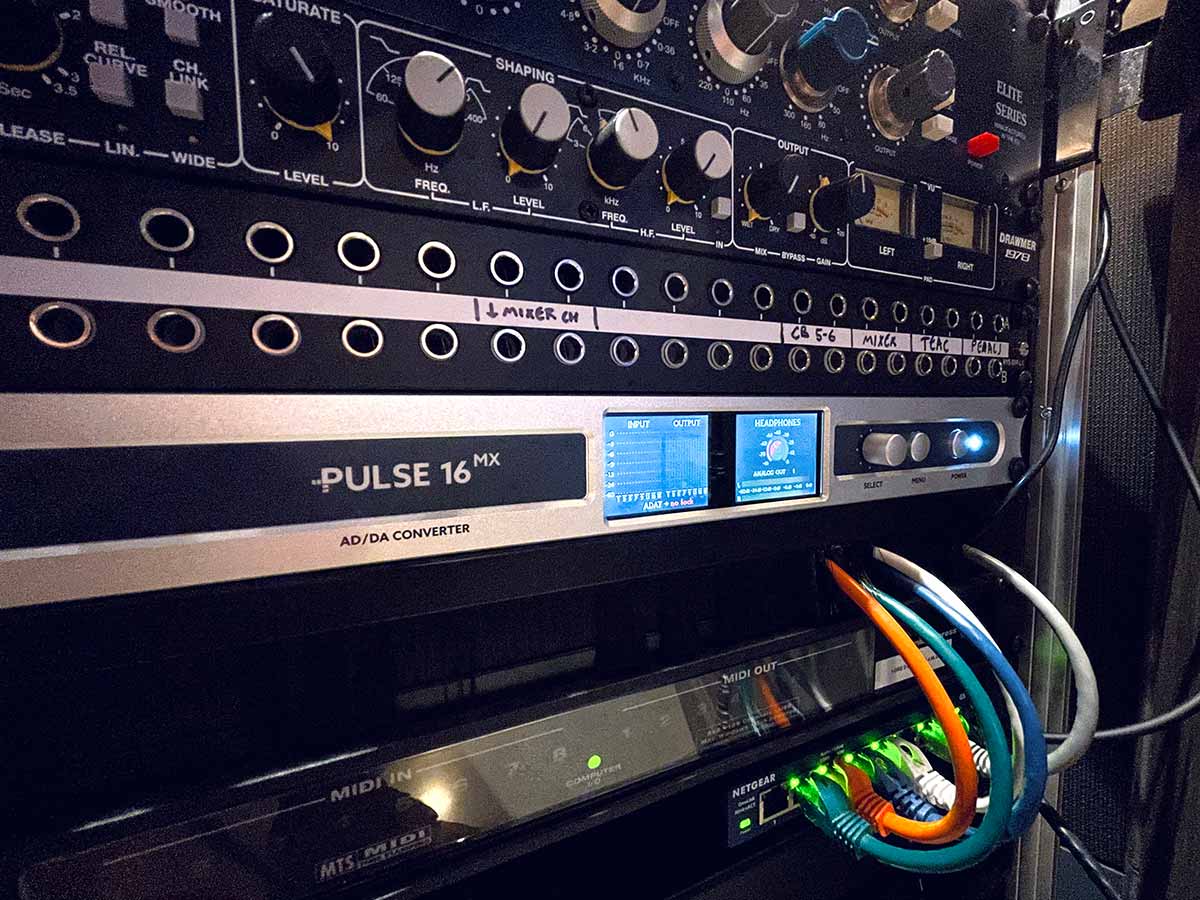
Managing multiple pieces of equipment in the studio can be a challenge, and when inspiration strikes, you need to be able to move quickly to capture those first fleeting ideas.
For James, this meant finding something that would enable him to be more efficient and creative in his workflow, keeping all of his gear organised and ready to go at a moment’s notice. This approach has allowed him to focus on what matters most: creating unforgettable music that resonates with the audience.
“I’m currently using the Pulse 16 to bring all my hardware I/O into Cubase, including monitoring D to A conversion. I’d been using quite a messy patchbay system before, and it was slowing me down and making me not want to use my hardware – so I knew I wanted plenty of analogue I/O to have everything permanently hooked up. My current room is quite small, so it’s helpful to have tidy digital runs instead of heavy analogue snakes.”
“I also needed something that would play nicely with my RME gear, which the Pulse 16 certainly does. I’m a great enthusiast for RME’s TotalMix software, and I found the Pulse 16 similarly familiar and accessible.
“The front panel gives me everything I need, and it’s particularly convenient to have another headphone output right on the front with an encoder to control the level so easily. It’s slotted into my rig seamlessly and has been nothing short of reliable.”
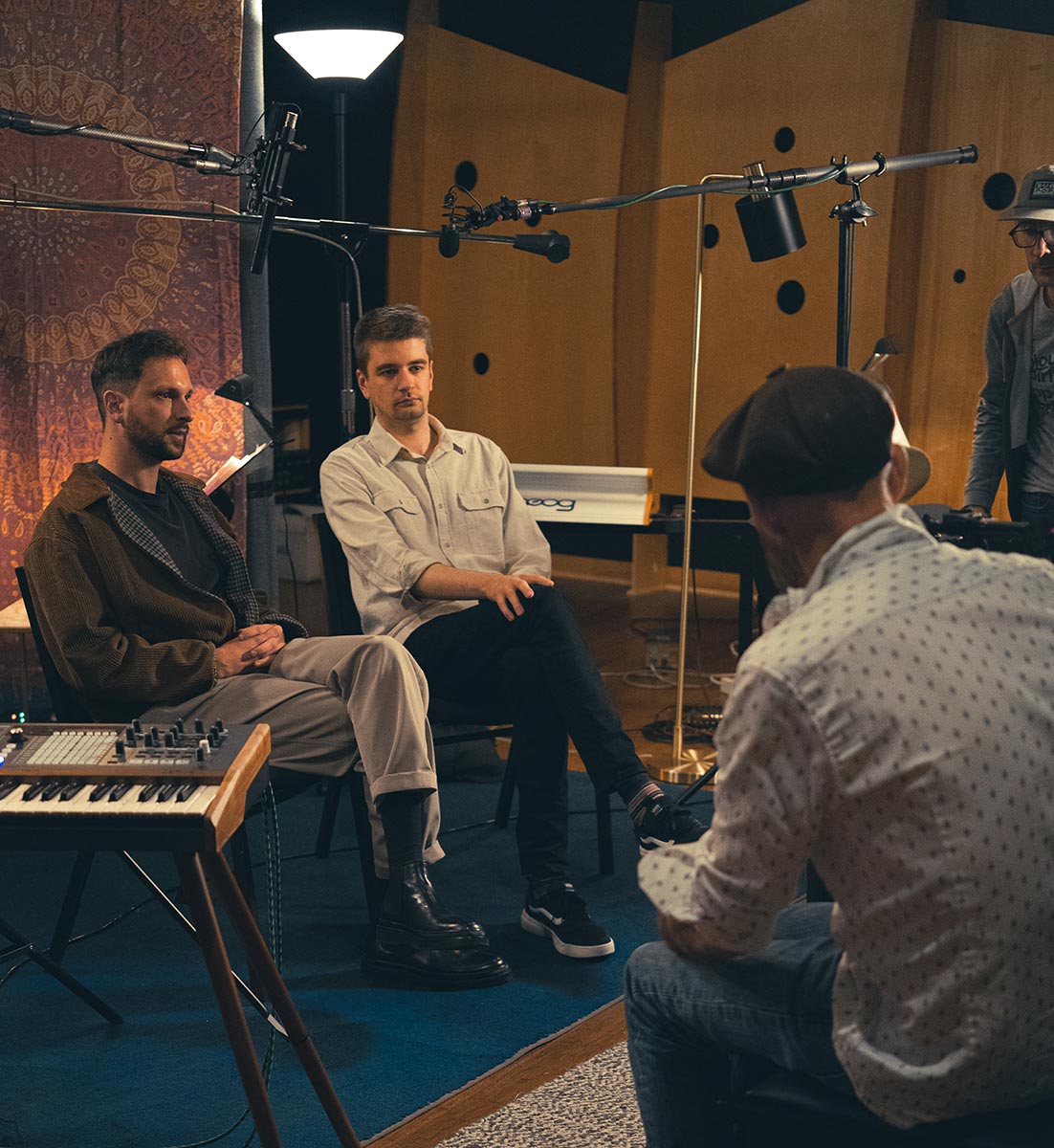 With the Ferrofish range providing options for both conventional “point-to-point” digital connectivity and AoIP, current trends seem to hint that both approaches will continue to have their place for the foreseeable future.
With the Ferrofish range providing options for both conventional “point-to-point” digital connectivity and AoIP, current trends seem to hint that both approaches will continue to have their place for the foreseeable future.
Point-to-point workflows via ADAT and MADI are the most straightforward way to expand an audio interface or recording setup, whereas AoIP formats like Dante and AVB are better suited for applications requiring multiple end-points, and more advanced signal routing.
“I experimented with AoIP a while back,” James says on the subject of audio technologies. “And while there are amazing applications for the technology, I found point-to-point was preferable for my workflow and the scale I’m working at.
“ADAT works great for my current configuration, but it’s good to also have the option of MADI, either for daisy-chaining or for longer runs, for example when working with machine room connectivity.”
“A great reputation with those I respect”
When it comes to reliability and feature set, James couldn’t be happier with the combination of RME and Ferrofish. Ultimately, it was Ferrofish’s reputation with other professional engineers that influenced his decision to expand his studio with the Pulse 16 MX.
“I always say the ultimate test for making a piece of new equipment ‘worth it’ is any positive impact on the creative process. With a synthesizer for example, if it helps unlock just one moment of a scene I’m writing music for then it stays.
“Gear like converters are less glamorous, but technical efficiency cannot be overstated in a modern workflow, and having every channel of hardware available right inside Cubase is without a doubt a creative gamechanger.

“Ferrofish have a great reputation with those I respect, and for the Pulse 16 to deliver on one of my own projects where reliability was key, that sealed the deal when the need arose for more conversion in my own studio.
“The Pulse 16 is clearly a very well thought through product, and all at a really attractive price point. That made it a no-brainer!”
Our thanks to James Everingham. To find out more about his work as a composer, visit his website at www.jameseveringham.com.
The official Royal Albert Hall organ sample library is available at www.royalalberthallorgan.com.
See the full range of Ferrofish Converters







